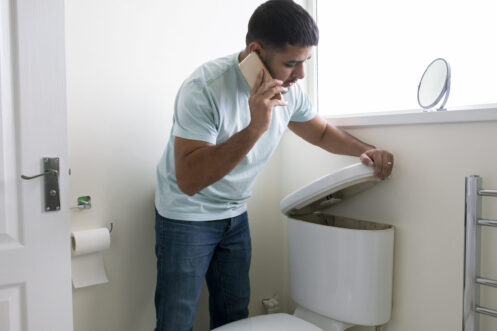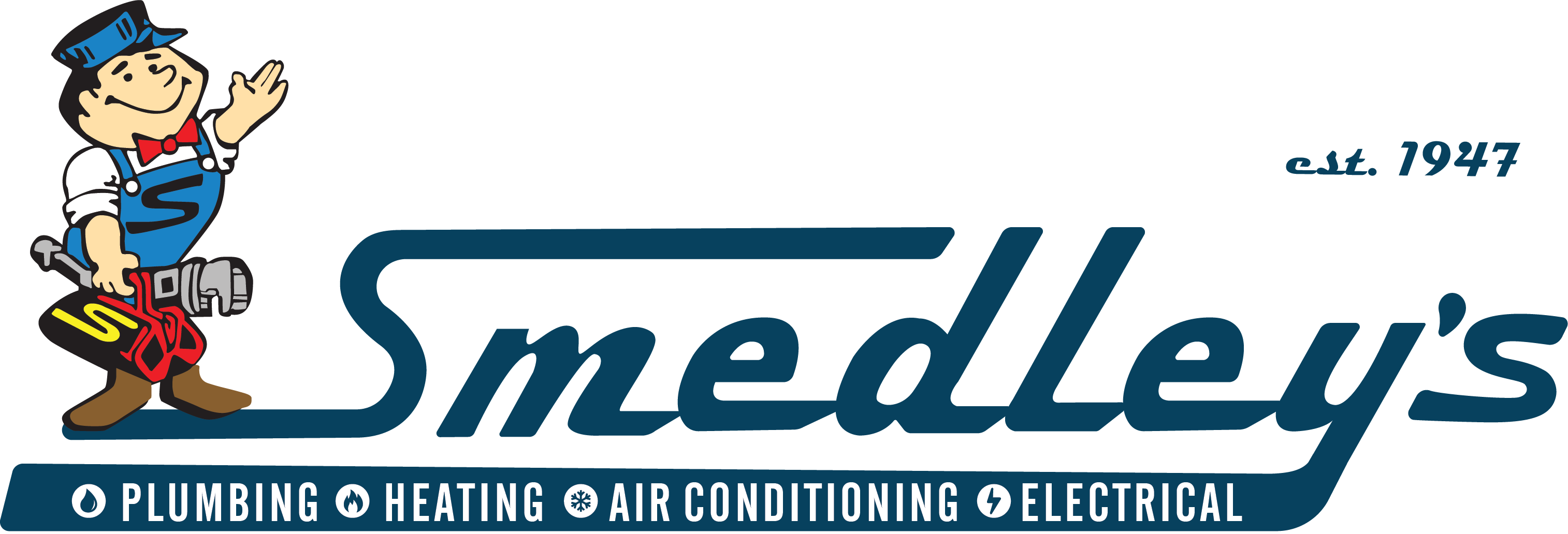
Are you dealing with an issue where your toilet suddenly won’t flush or just keeps running after you flush it? Issues like these are some of the most common plumbing problems you can encounter. Considering how often people use the toilet every day, certain parts of a toilet flushing mechanism are bound to eventually wear out or stop working properly and need repair.
How a Toilet Flushing Mechanism Works
Although a toilet flushing mechanism is fairly simple, it consists of multiple components that all need to work correctly for the toilet to flush and refill as it should. The parts responsible for flushing the toilet are the handle, flush arm, flapper, and chain. Pressing the handle down lifts the flush arm up, which raises the chain that lifts the flapper so that water rushes into the bowl.
The float, refill tube, overflow tube, and flush valve are responsible for ensuring the tank and bowl are refilled to the correct level. The float drops down toward the bottom of the tank as it empties, triggering the flush valve to open so that water begins flowing. Some of the water flows directly into the tank, and it starts refilling. Water also flows out of the refill tube into the overflow tube, which is how the bowl gets refilled. As the water level in the tank rises, it pushes the float back upward. Once the float reaches its original position, the flush valve closes, and the water shuts off.
Common Issues With a Toilet Flushing Mechanism
You can potentially encounter issues with every part of a toilet flushing mechanism. Some issues will prevent the toilet from flushing, and others can prevent the water from shutting off or lead to the tank or the bowl not getting fully refilled.
If your toilet won’t flush when you press the handle, it means there’s an issue with the flush arm, flapper, or chain. One possibility is that the connection between the handle and flush arm is broken or loose. You can usually tell if the connection is broken because this usually results in the handle being limp and hanging downward. If the connection is just loose, you’ll often be able to get the toilet to finally flush after pressing the handle multiple times. Nonetheless, this is still something you should get fixed, as it will most likely lead to your toilet no longer flushing.
One thing you should always check if your toilet won’t flush is that the chain is still connected to the flapper and the flush arm. The chain can sometimes get disconnected at one end, resulting in nothing happening when you press the handle. If the chain is disconnected, all you need to do is reconnect it, and your toilet should work again.
A weak flush most often happens because the float isn’t adjusted properly, resulting in the flush valve closing too soon and the tank never getting fully refilled. Trying to adjust the float can be quite tricky, especially with some newer toilet models. The main concern is that you could set the float too high and cause the toilet to constantly run. The tank should never overflow because water will start flowing over the edge of the overflow tube and into the bowl when the tank starts getting too full. The bowl also shouldn’t overflow since toilets are designed so that the bowl basically flushes itself once the water reaches a certain height.
Nonetheless, a toilet that runs constantly is still a big concern due to the amount of water that gets wasted. In most cases, you’re looking at the toilet wasting around 3 gallons of water per minute or more than 4,000 gallons per day. That’s why you should immediately call a plumber if you can’t get your toilet to stop running; otherwise, your water bill will increase massively.
One of the most common issues you may encounter is “phantom flushing,” which occurs when the bowl flushes on its own as the water level rises above a certain point. The toilet will also run on its own whenever the water level in the tank drops low enough that the float causes the fill valve to open.
These issues indicate that water is slowly leaking out of the tank, which usually happens because the flapper no longer fully seals off the hole at the bottom of the tank. The rubber that allows the flapper to create a watertight seal will likely wear out at some point, causing water to leak into the bowl. Mineral deposits can also build up on the flapper to the point where it can’t create a proper seal. Putting food coloring in the tank allows you to easily test if water is leaking into the bowl. You can be certain the toilet is leaking if the water in the bowl becomes colored.
Can You Fix a Toilet Yourself?
Fixing an issue like the chain coming loose is something you can easily do on your own in just a few seconds. However, most other toilet issues should be left to a professional plumber. This is partly just because you could easily damage different parts of the flushing mechanism and make things worse. For instance, the flapper and the overflow tube are connected on some toilets, which makes trying to replace the flapper if it’s worn out much more complicated. One concern in this situation is that you could end up cracking the overflow tube, causing water to constantly leak into the bowl and the toilet to run frequently or nonstop.
Certain components, like the overflow tube and the fill valve, are connected to the tank with a nut and washer, meaning you first need to remove the nut before you can remove and replace the component. Trying to replace these components yourself carries the risk of ruining the toilet and then having to replace it. That’s because you can easily end up overtightening the nut and cracking the tank when installing the replacement part. If the toilet is a two-piece model, you can just replace the tank if it’s cracked. However, just swapping the tank usually not worth it because it will often cost about the same as just replacing the entire toilet.
When plumbing issues arise, you can turn to our experts at Smedley Service for help. We’ve been serving homeowners in Layton, UT and the surrounding areas since 1947 and have an outstanding reputation for providing top-quality plumbing services. We provide free estimates and up-front pricing on all of our services and will do whatever we can to make sure you’re 100% satisfied. Our team is available 24/7 to repair any type of plumbing emergency, and we also offer flexible appointment times so that you can fit us in around your schedule. Contact us today to get help fixing your toilet or to schedule any other plumbing repair, including pipe repair, or installation service.




